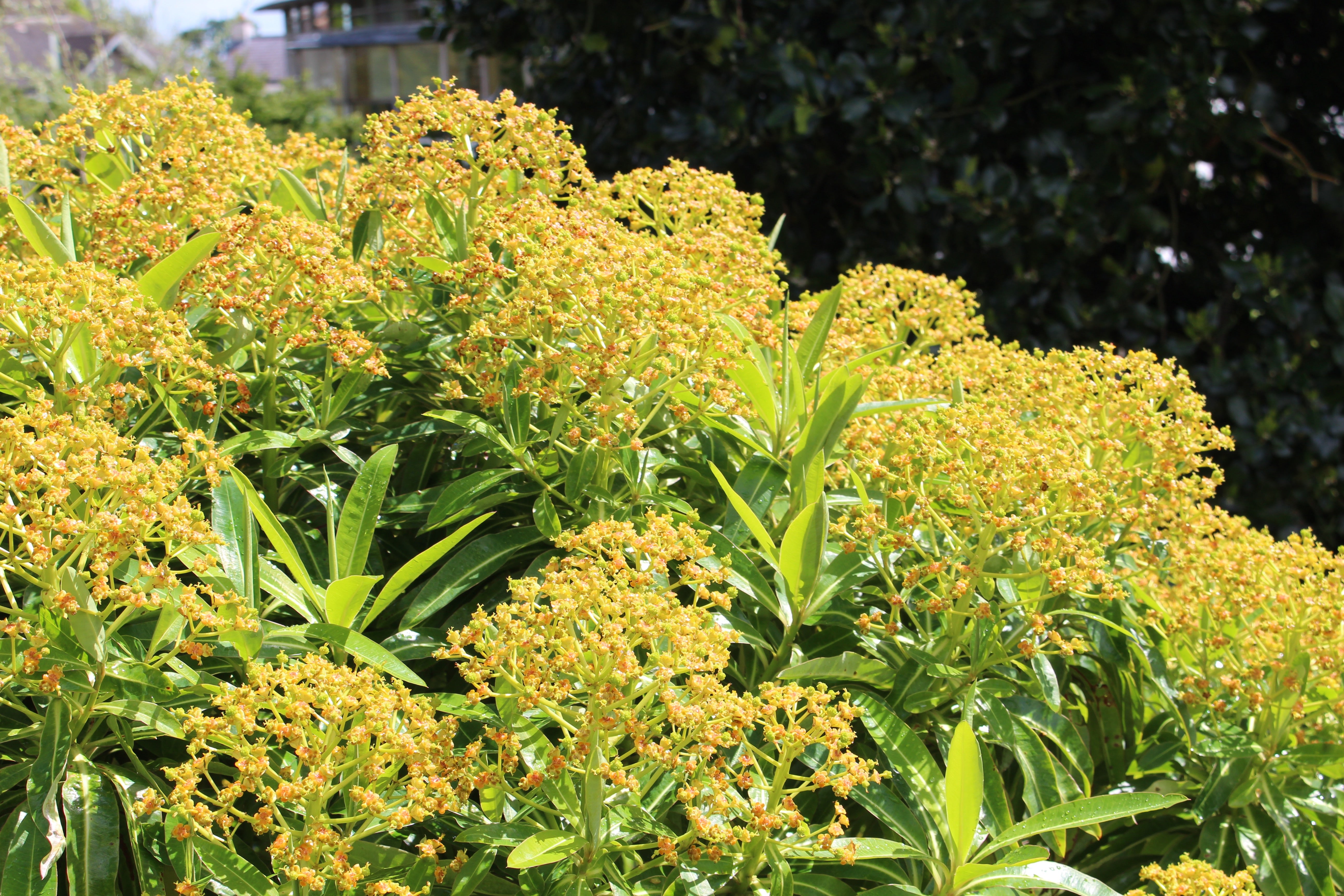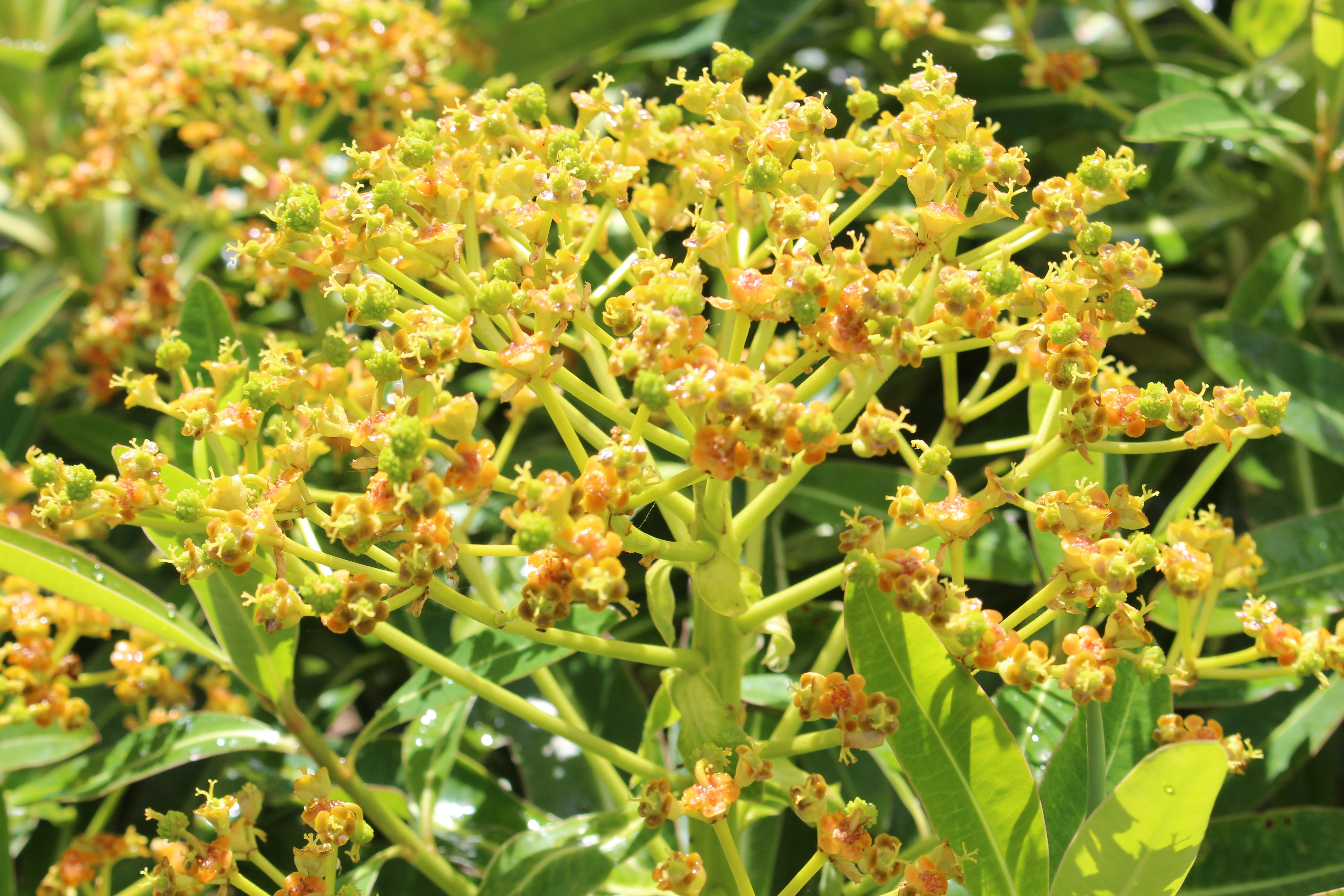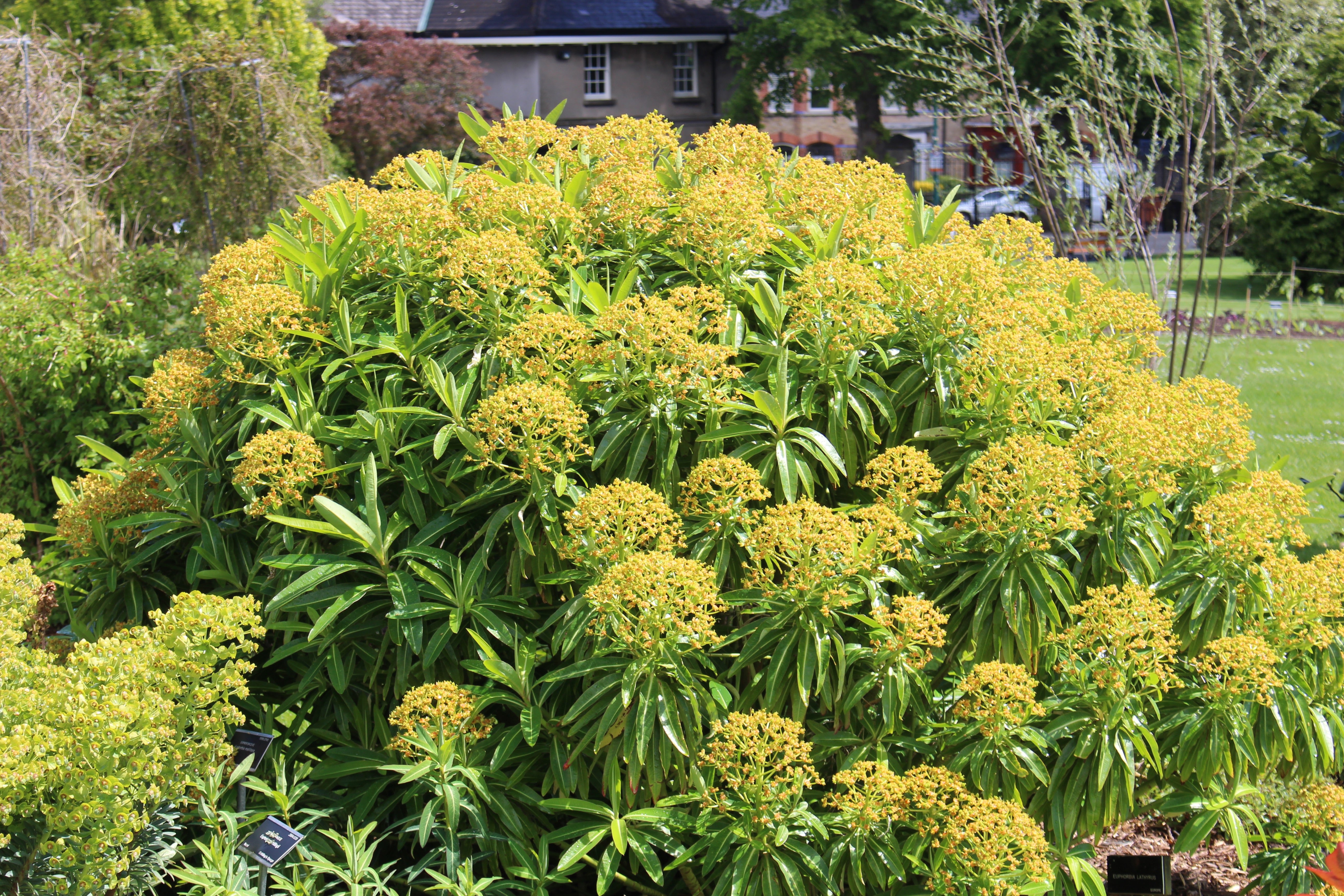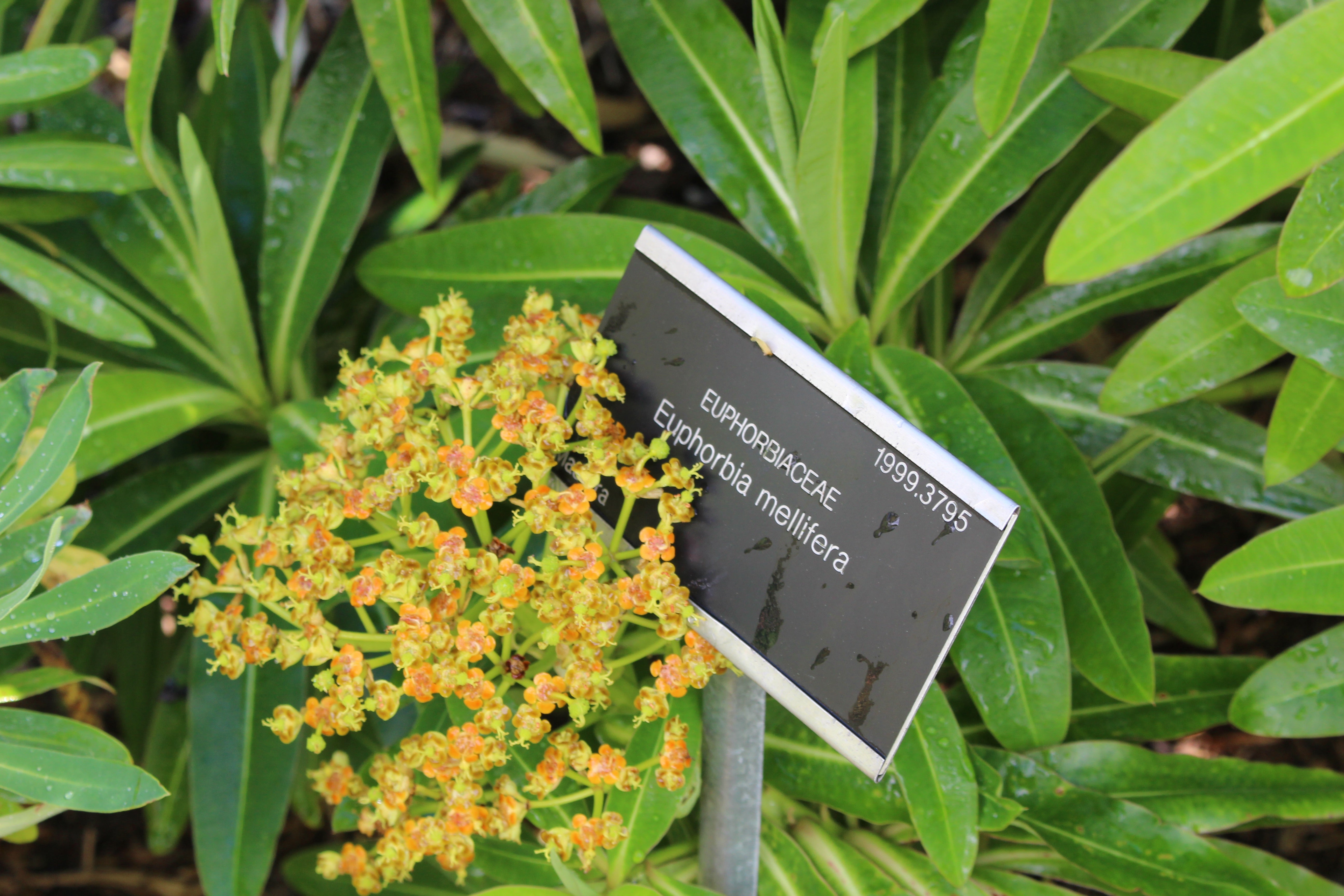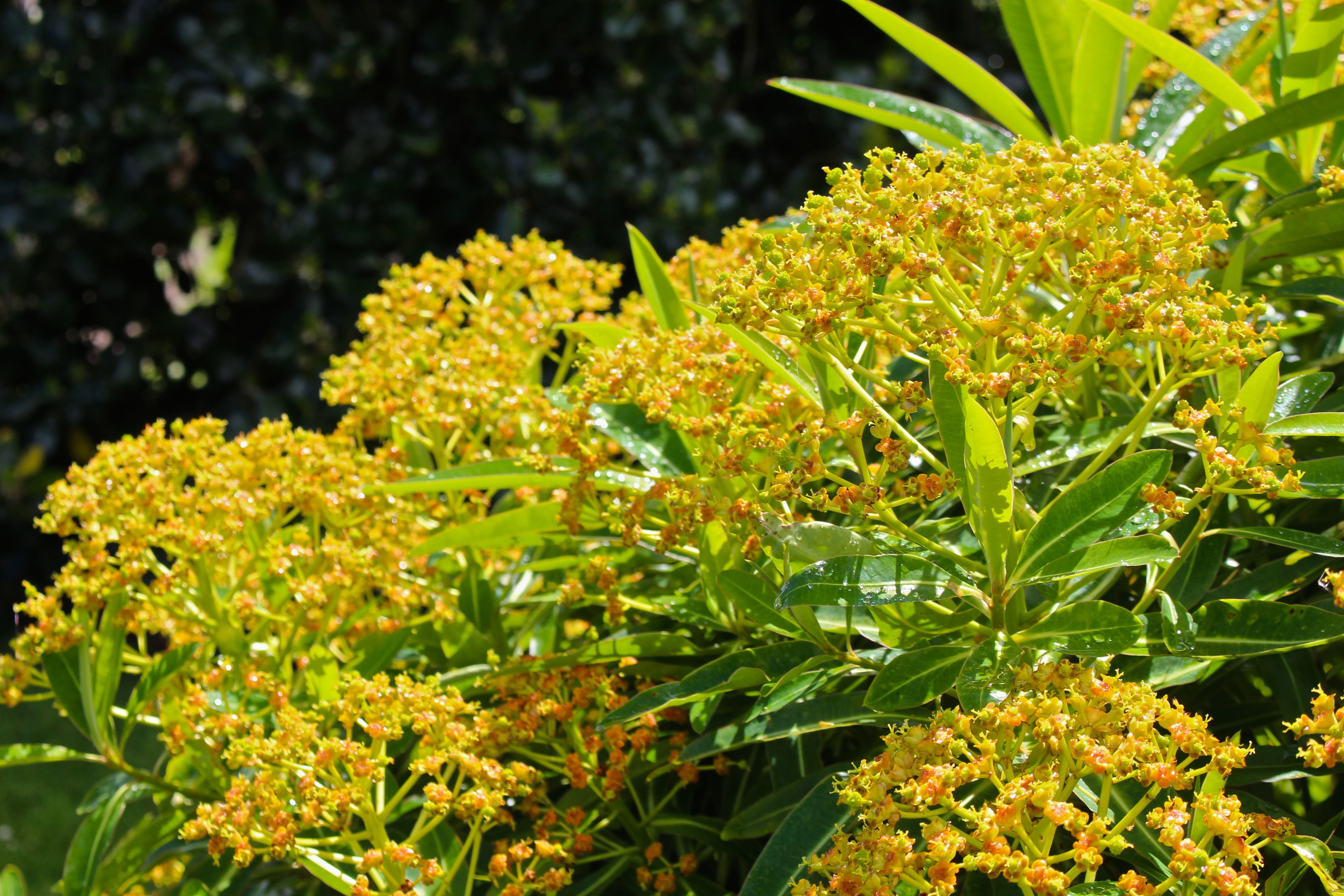Euphorbia mellifera
Approx. 0.5 litre pot
About this cultivar:
Euphorbia mellifera is native to the Canary Islands, hence the common name Canary Spurge. Shrublike and taller than its relatives, its smooth green stems are whorled by narrow, bright apple green leaves marked with prominent cream-hued midribs. The epithet means "honey-bearing" and refers to the aroma of its intriguing flowers, which range in colour from butter to terra-cotta.
Euphorbia mellifera is not reliably hardy where winters are cold and wet. We don't grow it own our garden unfortunately (too cold and wet) but dad has had success with it in other places he has worked. Unsurprisingly has the Royal Horticultural Society Award of Garden Merit (RHS AGM). The plant that is, not dad. That would be a surprise....
- Position: Full sun
- Soil: Almost any soil, not too wet
- Flowers: May, June, July, August
- Other features: Royal Horticultural Society Award of Garden Merit (RHS AGM)
- Hardiness: H3 - Hardy in coastal and relatively mild parts of the UK (-5 to 1°C)
- Habit: Clump forming
- Foliage: Evergreen
- Height: 150 - 195 cm (5 - 6.5 ft)
- Spread: 150 - 195 cm (5 - 6.5 ft)
- Time to full growth: 5 to 10 years
- Plant type: Herbaceous Perennial
- Colour: Green, yellow
- Goes well with: Iris, Tulipa, Allium, Lupin and with foliage plants such as Cotinus.
About this genus:
Euphorbia (spurge) is a large and diverse genus of over 2000 (!!) species of flowering plants in the spurge family (Euphorbiaceae). The common name "spurge" derives from the Middle English/Old French espurge ("to purge"), due to the use of the plant's sap as a purgative. The botanical name Euphorbia (pronounced "u-for-be-a") derives from Euphorbos, the Greek physician of king Juba II of Numidia (52–50 BC – 23 AD), who married the daughter of Anthony and Cleopatra (imagine those in-laws!). A philosopher-king, Juba was a prolific writer on various subjects, including natural history. In 12 B.C. Juba named this plant after his doctor Euphorbos. In 1753, Botanist and taxonomist Carl Linnaeus assigned the name Euphorbia to the entire genus in the physician's honor! Phew!
Depending on the cultivar, Euphorbia grow almost anywhere that is not too extreme; we have them everywhere in our garden at Ballyrobert. In the garden Euphorbia is prized for its unique flower heads, textural foliage, and wonderful garden structure. Many new perennial Euphorbia cultivars feature leaves that vary from green to yellow to blue-green to powder blue to purple and some are even variegated or splashed with colour. The flowers attract butterflies and all sorts of creepy crawlies; truely a garden essential!
Try them with Iris, Tulipa, Allium, Lupin and with foliage plants such as Cotinus.

